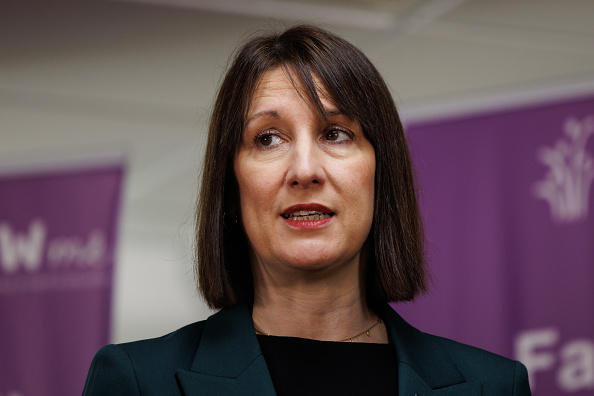Employers should increase the number of older people in the UK workforce by one million over the next five years to combat age bias, the government’s Business Champion for Older Workers, Andy Briggs says.
To address the widening skills gap, tackle age bias in work and enable people to stay in work longer, every UK employer should increase the number of workers aged 50-69 in the UK by 12 per cent by 2022.
The target is aimed at supporting older people who want the same range of options and opportunities as younger colleagues, and to be recognised for their experience and expertise. In recognising the skills older people bring to the workplace, employers will benefit from the breadth and depth of their knowledge.
Businesses need support
The government appointed Andy Briggs, who is CEO of Aviva UK Life, as its Business Champion for Older Workers alongside the Business in the Community Age at Work Leadership Team of which he is chair. As Business Champion, Andy and Business in the Community are tasked with supporting businesses to retain, retrain and recruit older workers.
‘One million more older people in work by 2022 is an ambitious yet necessary target. There are 15 million people of this age group in the labour market, yet only nine million are in work. We want to get this to 10 million by 2022,’ says Briggs.
‘This target is achievable if employers commit to taking an honest and sustained approach to understanding age bias in their organisations. Older people can be written off by their employers, but we are asking employers to consider carefully the overwhelming benefits of having a diverse and representative workforce, and then to act on it.
‘We live in an ageing society so it is critical that people are able to work for as long as they need and want to and there are overwhelming benefits for both employers and employees. Many people aged over 50 want to continue to develop their careers, learn new skills, try new things and also share their broad knowledge and experience.’
Related: Older entrepreneurs: Tips for business success
Briggs adds, ‘This is good for everyone, and particularly for employers and their businesses who will benefit from drawing on the talent, creativity and experience of all of their employees, regardless of their age.’
Older employment rate needs to rise
The employment rate for people aged 50-69 is 59 per cent and the Business Champion for Older Workers says this must increase to 66 per cent by 2022 if the UK is to start addressing its skills gap. By 2022, 14.5 million more jobs will be created but only 7 million younger workers will enter the workforce – leaving 7.5 million roles unfilled.
Rachael Saunders, Business in the Community’s Age at Work Director, says, ‘Our role is to raise awareness of the injustice facing so many older workers and people in the UK. The over 50s are a key part of the UK workforce and employers need to open their eyes to this talent pool. We are here to provide employers with the practical guidance and support they need to take action.
‘We urge employers to get behind this target and work with us to prevent people from leaving work unnecessarily early and to benefit from an age diverse workforce.’
Older workers can add to the GDP
At the launch event, Andy will outline the facts behind the 2022 target, which include:
If the employment rate of people aged 50-64 matched that of those aged 35-49, it would add more than 5 per cent to UK GDP, or £88 billion. By 2020, over 50s will comprise almost one third of the working age population and almost half of the adult population.
The UK employment rate at aged 50 is 83 per cent, dropping to 64 per cent at aged 60. 47.2 per cent of people aged 50+ and unemployed have been out of work for 12 months or more, compared to 34.3 per cent of all UK adults.
Andy as Business Champion for Older Workers and in collaboration with Business in the Community, publishes a ‘How To Guide’ to support employers in achieving their 12 per cent target by understanding their workforce profile, listening to what their older employers need, and taking action to improve their retention and recruitment of older employees.
The Business in the Community and its Age at Work Leadership Team, chaired by Andy Briggs, will track progress by reviewing the government’s Labour Force Survey statistics for increases in the total number of older people in work and in the employment rates of older workers aged over 50, and is committed to supporting employers in meeting the target.
The target is supported by the Centre for Ageing Better. Anna Dixon, chief executive, says, ‘The Centre for Ageing Better gives its full support to achieving the goal of a million more older people in work over the next five years. By 2022, more than one in three workers will be over 50.
‘Employment rates for this age group have been growing, but they remain much lower than for younger people, with a rapid falling off after the age of 55. Increasing the numbers of people over 50 in fulfilling work is good for society, good for business and most importantly good for people themselves.’
Dixon concludes, ‘To achieve this ambitious target, we need age-friendly workplaces, which allow people to sustain productive and healthy working lives for longer. Older workers should expect to be treated equally and fairly as any other worker, with flexibility, reasonable adjustments, and opportunities for development.
‘A number of employers are already taking positive steps to become age-friendly and support older workers. Through our partnership with Business in the Community we are building and sharing the evidence of what works so that more employers understand what they can do and take effective action. This target is a decisive call to action – we all need to do much more to ensure that workers over 50 have the chance to continue to work in later life.’





